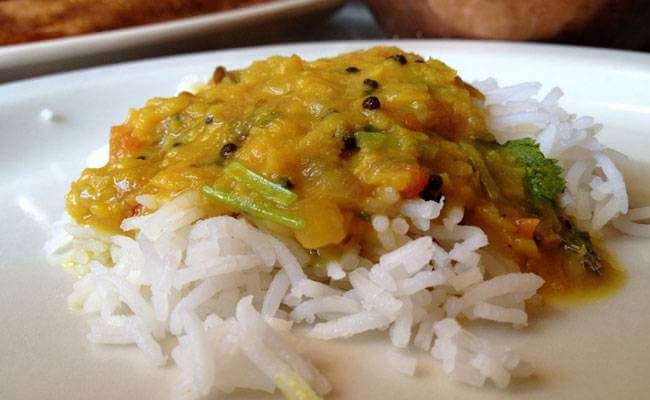Navodita talks about two meditation techniques, cyclic meditation, and the Oriental Tai Chi, which are the soul of Yoga, in her weekly column, exclusively in Different Truths.
India has been the land of birth of several religions. Even Buddhism and Jainism are said to have found their roots in Hinduism, the religion of the majority of Indians. Ancient Indian texts are full of several ways of meditating, exercising and chanting mantras. Meditation has scientifically been explained as an awareness training which produces permanent changes in perception, attention, and cognition. Meditation, more than yoga, is associated with mental calmness and alertness. Here we talk about a form of meditation called cyclic meditation.
It is a technique derived on the basis of combining the two practices, which have a ‘stimulating’ and ‘calming’ effect. The yoga postures in this form of meditation are practiced slower than usual. In the activating phase, yoga postures are practiced about four times slower than the usual practice. The awareness is maintained throughout the practice with closed eyes observing changes, which occur in the body, such as respiratory rate, heart rate, blood flow and contraction and relaxation of muscles. This form of meditation is developed at the Vivekananda Kendra. It is inspired by a verse found in theMandukya Upanishad:
Laye sambodhayet cittam viksiptam samayet punah
Sakasayam vijaniyat samapraptam na calayet
It means to stimulate and awaken the sleeping mind, calm down the distractions, recognise the innate stagnation and stay in steadiness without disturbing it.
In cyclic meditation, you are supposed to stretch consciously and systematically and then relax using standing postures like Pada Hastasana, etc. This form of meditation begins with Instant Relaxation Technique (IRT) and then you move on towards Quick Relaxation Technique (QRT). In IRT you have to lie down on your back in Shavasana, tighten all the muscles from top to toes, part by part, and after tightening and stretching the whole body, relaxing the entire body in one go by loosening all the muscles at a time. This can be practiced separately also sitting on a chair to get quick relaxation. It hardly takes five minutes to practice one round. After this, you have to perform the QRT. In this again, you have to lie down in Shavasana. Observe the movement of abdominal muscles. Stay aware of the rhythmic heaving up and down of the abdominal wall. With inhalation, the abdominal wall rises up. Feel energised with each inhalation. With the exhalation, the abdominal wall collapses. Feel relaxed with each exhalation. Merge in deep silence by chanting one akara (Aaaaa sound). After gently coming up from QRT, perform the Shashankasana and Ushtrasana. Now, lie down for a long Shavasana, also called Deep Relaxation Technique (DRT). Part by part, relax your whole body by moving the consciousness from one body part to another. This may take another ten minutes. Slowly sir down in deep silence. Later we shall discuss the use of sound and visual stimulations to go deeper in meditation.
There is yet another form of meditation based on the Oriental principles of Confucianism, Taoism and Buddhism known as Tai Chi Chuan form of meditation, also called ‘moving meditation’. It is a way of harmonising body and mind dynamically where the mind should be still and should still be able to actively circulate ‘Chi’. Some basic form of Tai Chi steps are discussed here:
- First stand with your feet shoulder-width apart with your toes pointing straight ahead and your knees slightly bent.
- With your hips tucked slightly forward, keep your shoulders down and head and chin up.
- Slowly inhale and exhale deep breaths through your nose. You should now continue this meditation with your eyes closed, partly closed or half-shut.
- Focus on your feet and their connection with the earth.
- While performing slow meditative actions, follow this breathing pattern- as you inhale, imagine that you are pulling energy into your feet from the ground or earth. As you exhale, you return the energy to the ground.
- Repeat this numerous times, then let the energy from the ground travel up your legs and into the centre of your inner strength, which is located right at the centre of your body around the belly button. Exhale, getting rid of any negative, impure energy.
In this meditative form, you are supposed to focus on your breathing as explained above and also involve opening and closing movements. With opening movements like pulling your hands apart or opening them, you are supposed to breathe in. When your hands come together or close, you are supposed to exhale. Similarly, when you move your hands up, you breathe in and when you move them down, you breathe out slowly and consciously.
Some important dos and don’ts for all forms of meditation are:
- Avoid eating for at least half an hour before meditation
- Find a quiet place to meditate
- Rest your hands lightly on your lap
- Keep your spine straight
- Relax your gaze
Tai Chi is also supposed to have many health benefits and is sometimes referred to as ‘medication in motion’. It is said to unblock and channelise proper flow of qi – an energy flow thought to circulate throughout the body. It is said that Tai Chi is supposed to keep the balance of ‘yin’ and ‘yang’ – opposing elements thought to make up the universe.
Practice Tai Chi and cyclic meditation as we go deep into similar forms of meditative techniques soon.
©Navodita Pande
Photos from the Internet
#Taichi #YogaAndTaichi #CyclicMeditation #HolisticHealth #Meditation #Upanishadh #MeditationTechniques #DifferentTruths







 By
By

 By
By
 By
By